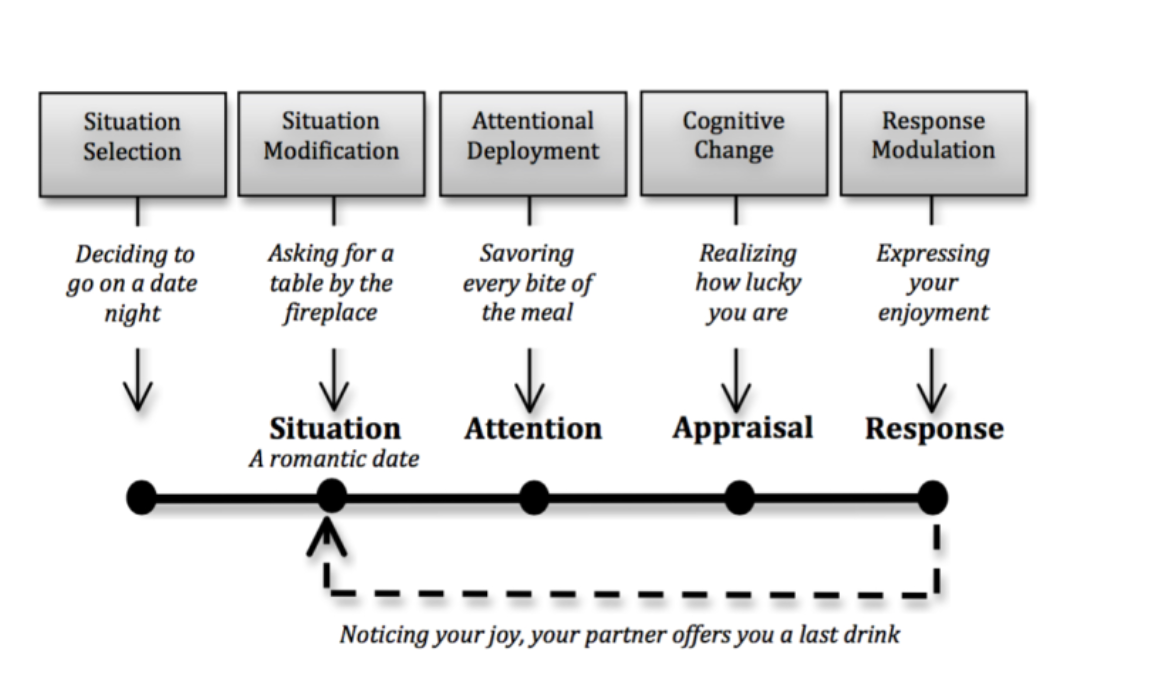Swarmed
Learn to express yourself while maintaining restraint, differentiate feelings from actions, and master the Process Model of emotional regulation.

Most of us are familiar with the term Emotional Intelligence or EQ, but the truth is that being familiar with a category of personal or professional development and understanding it enough to implement it into our lives isn’t always the same.
“Common sense is not always common practice” is how the phrase goes, and my take is, damn, I want to act rationally and implement all these great ideas into my life, but I easily get off-kilter, especially when my emotions get involved!
If you feel you have a firm grasp on your emotions and you never let them get the best of you, you are my hero & maybe this specific edition of Unraveled isn’t your cup of tea. It’s all good. But if you are anything like me and your emotions can feel like a swarm of bees has taken residence in your brain, then read on. I have been working on being more emotionally stable, I’d like emotions to be more like a 0-1.9 on the Richter scale instead of a near and total destruction 9 and over zone. Are you with me? Let’s talk about it together. In this write-up, we cover three areas: how to express yourself but use restraint, how you feel versus how you behave, and an outline called The Process Model of emotional regulation so you can best understand how your emotions loop.
Express Yourself, But Wrangle It!
You all know me by now, and if you don’t, you should know that I am all for 1000% expressing yourself and learning the unique art form of doing so in a way that feels good to you, but sometimes (especially when it comes to emotions) you’ve got to reign it in baby! I remember one time in a sales training a manager looked at me and said, “Becca, you’re doing great, but you need to work on your face. Your face is the problem because it tells all!” I was stunned and a little offended, being the rookie that I was, but he wasn’t wrong. My face does tell an entire story even when I’m not using words, and emotions are no different. When you have all the feels (rational or not), they can come across in your face and in your actions. The very first step is being hyper-aware that what you are feeling is just a feeling, not an end all be all, or terminal prognosis. It’s happening now, you feel it, you’ve acknowledged it, and it’s okay to have those emotions, but it’s not okay to let it bleed into your work or family and sabotage a whole day.
Feeling It Versus Acting on It
It’s one thing to feel an emotion and something totally separate to act on the emotions. So why can it be so difficult to understand why sometimes our emotions are fierce and other times pretty minor, and we can sidestep them?
“Emotions arise in the limbic system, the non-verbal, more primitive brain centers we share with other animals, not from the neocortex, the seat of rational thought. The neocortex “notices” and is affected by activity in the limbic system. This is why we can’t always immediately name or identify an emotion when we feel it, and why strong feelings can temporarily flood or short-circuit rational thought.” 1
So maybe we can’t name the emotion or even understand why we feel it so strongly, but I know one thing to be true. Our actions have real consequences for ourselves and others. They can get us fired, arrested (no, I haven’t been arrested yet), or even divorced. They can hurt our loved ones and coworkers. This is why it matters so much to differentiate behavior from internal feelings and emotional states.
Okay, now we understand we have to keep our emotions contained and that sometimes we have to learn not to act on all the emotions we feel (we have to learn to stifle them). Let’s dive into a framework that can help us out.
Because when our emotional Richter scale is teetering toward the “Danger Zone” (yes, I’m singing Highway To The Danger Zone in my head right now), we have to tame the beast.
The Process Model
The process model of emotional regulation, developed by James Gross, is a deduction of how we process our feelings at any given time. It is the sequence in which our emotions are triggered and then responded to. It goes like this: situation → attention → appraisal → response.
Situation
This is the situation that triggers the emotional response. For example: someone said something critical or mean. This comment would then initiate the emotional response (hurt, shame, embarrassment, anger, sadness, etc.)
Attention
Your attention is then drawn to the emotional situation. Example: a friend crossing their arms as they say something critical of you. This seems like a physical display of their anger. Within the situation, your attention will be drawn to what feels like further evidence of your emotional response.
Appraisal
This is the process we go through when speculating or assigning unspoken meanings & fears to the situation. Take the above example. If a friend says something critical of you, loudly with their arms crossed, instinctively, your mind may jump to “they don’t want to be friends with me anymore” or “they hate me.”
Response
Once all three of the above happen, that’s typically when we respond. Our emotions may take over, and we might lash out or cry or avoid the situation to not have to deal with the negative emotions.
Because an emotional response can cause changes to a situation which involves a feedback loop from response to situation, this feedback loop suggests that the emotion generation process can occur recursively, is ongoing, and is dynamic. The process model contends that each of these four points in the emotion generation process can be subjected to regulation. From this conceptualization, the process model posits five different families of emotion regulation that correspond to the regulation of a particular point in the emotion generation process. They occur in the following order:
1. Situation selection: Choose situations that could happen to you and map out how you would like to respond if and when they happen
2. Situation modification: efforts taken to modify the emotional impact of the situation (this can be breathing techniques, a hard pause, meditation, etc.)
3. Attentional deployment: shift where you’re focusing your attention to different aspects of the situation
4. Cognitive change: reappraising a scenario ( thinking about an event in a different way) to change its emotional impact
5. Response modulation: this can be referred to as response suppression after the emotion has taken place, you have a choice in how you will respond to the emotion to modify your responses.

This image gives you an example in a relationship and paints a good picture for us to understand the framework. The big picture is that our emotions can be modified when we pay attention to them, dive a bit deeper into why we feel them and respond to them accordingly, and that feeds back into the outcome of HOW it all plays out. If our response is not to modify the emotion for a winning outcome, we will keep looping back and replaying the negative again and again.
Phew, exhale. That felt like a lot and was super scientific, but sometimes we need to step back and take a more practical look at the feedback loops and why our brains try to repeat something and spiral us out of control.
It’s within our control to modify the process and interrupt it, so to speak.
I hope that this edition of Unraveled gives you some tools that can help you the next time your emotions start buzzing and taking up residence in your mind. Let’s learn to express ourselves and stifle those expressions when we KNOW that those feelings aren’t going to serve anyone!
I’ll leave you with this amazing Jocko Willink video that talks about controlling our emotions better than I can!
Resources:




